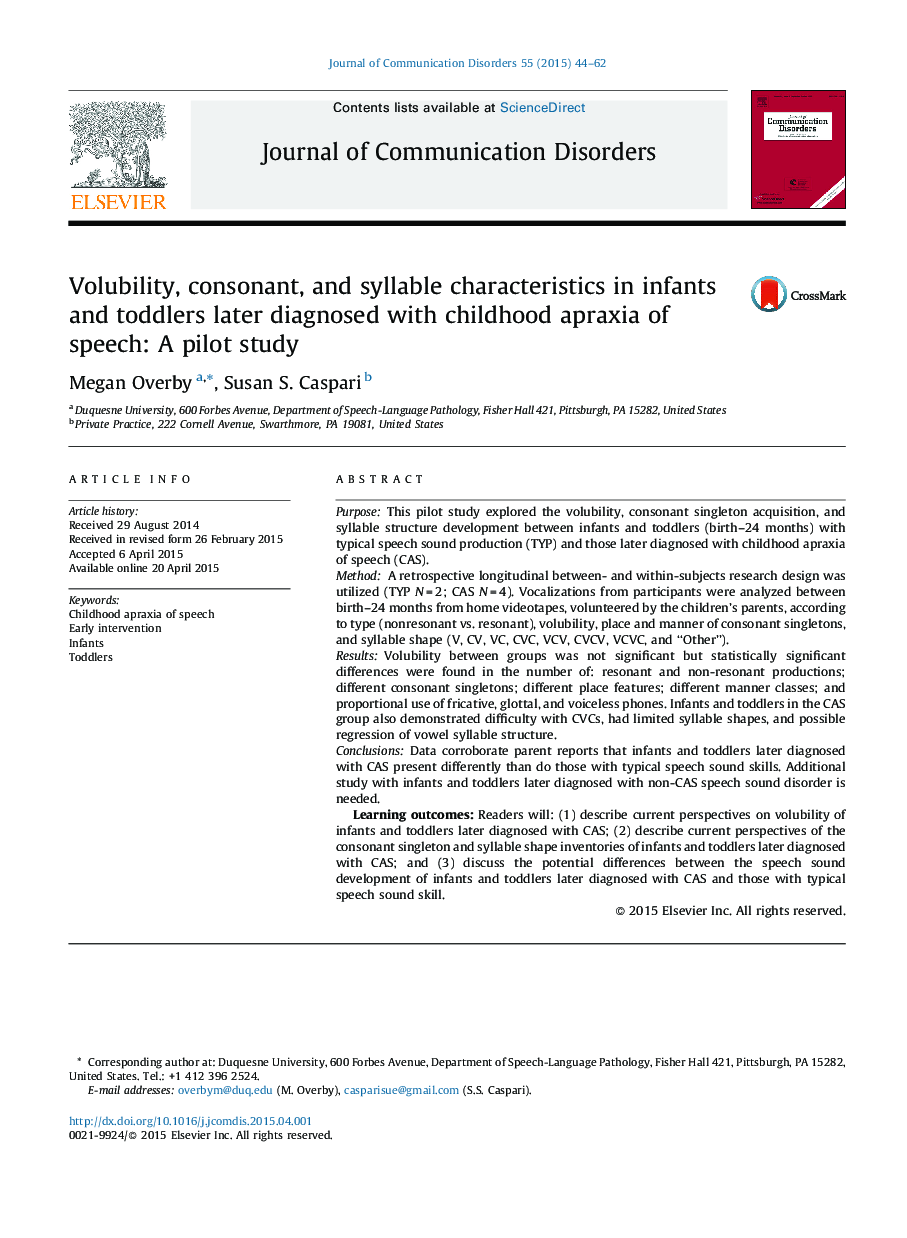| کد مقاله | کد نشریه | سال انتشار | مقاله انگلیسی | نسخه تمام متن |
|---|---|---|---|---|
| 910793 | 1473101 | 2015 | 19 صفحه PDF | دانلود رایگان |
• We examined speech sound development (birth–24 months) in CAS.
• Typical infants and toddlers used more resonant phones than those with CAS.
• All CAS infants and toddlers demonstrated difficulty with voiceless productions.
• CAS infants and toddlers had difficulty with fricative manner and glottal placement.
• CAS infants and toddlers used mostly V and CV syllable shapes.
PurposeThis pilot study explored the volubility, consonant singleton acquisition, and syllable structure development between infants and toddlers (birth–24 months) with typical speech sound production (TYP) and those later diagnosed with childhood apraxia of speech (CAS).MethodA retrospective longitudinal between- and within-subjects research design was utilized (TYP N = 2; CAS N = 4). Vocalizations from participants were analyzed between birth–24 months from home videotapes, volunteered by the children's parents, according to type (nonresonant vs. resonant), volubility, place and manner of consonant singletons, and syllable shape (V, CV, VC, CVC, VCV, CVCV, VCVC, and “Other”).ResultsVolubility between groups was not significant but statistically significant differences were found in the number of: resonant and non-resonant productions; different consonant singletons; different place features; different manner classes; and proportional use of fricative, glottal, and voiceless phones. Infants and toddlers in the CAS group also demonstrated difficulty with CVCs, had limited syllable shapes, and possible regression of vowel syllable structure.ConclusionsData corroborate parent reports that infants and toddlers later diagnosed with CAS present differently than do those with typical speech sound skills. Additional study with infants and toddlers later diagnosed with non-CAS speech sound disorder is needed.Learning outcomes: Readers will: (1) describe current perspectives on volubility of infants and toddlers later diagnosed with CAS; (2) describe current perspectives of the consonant singleton and syllable shape inventories of infants and toddlers later diagnosed with CAS; and (3) discuss the potential differences between the speech sound development of infants and toddlers later diagnosed with CAS and those with typical speech sound skill.
Journal: Journal of Communication Disorders - Volume 55, May–June 2015, Pages 44–62
